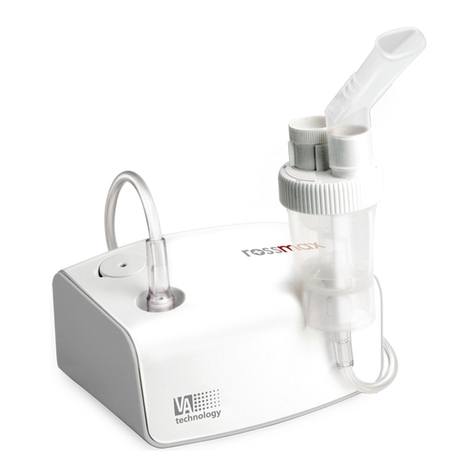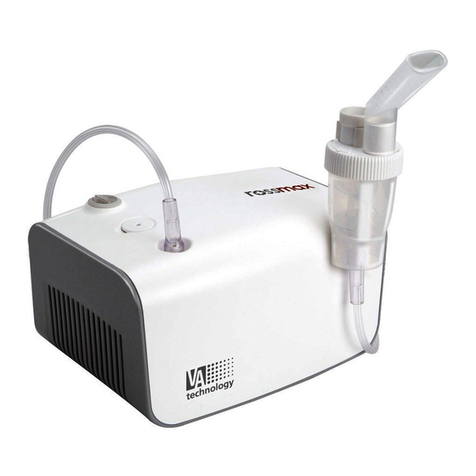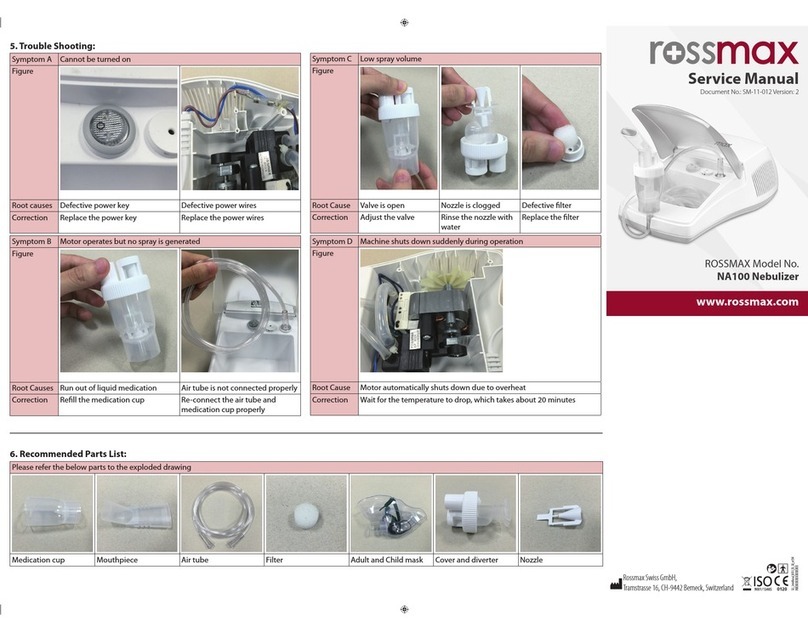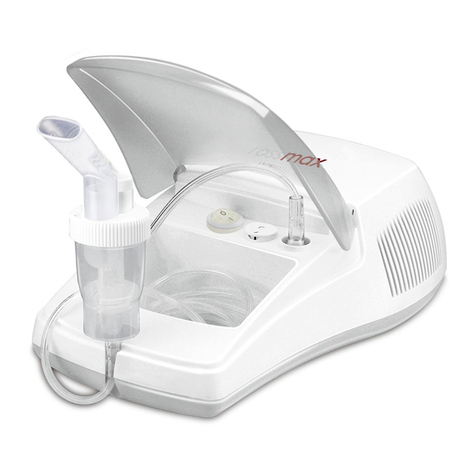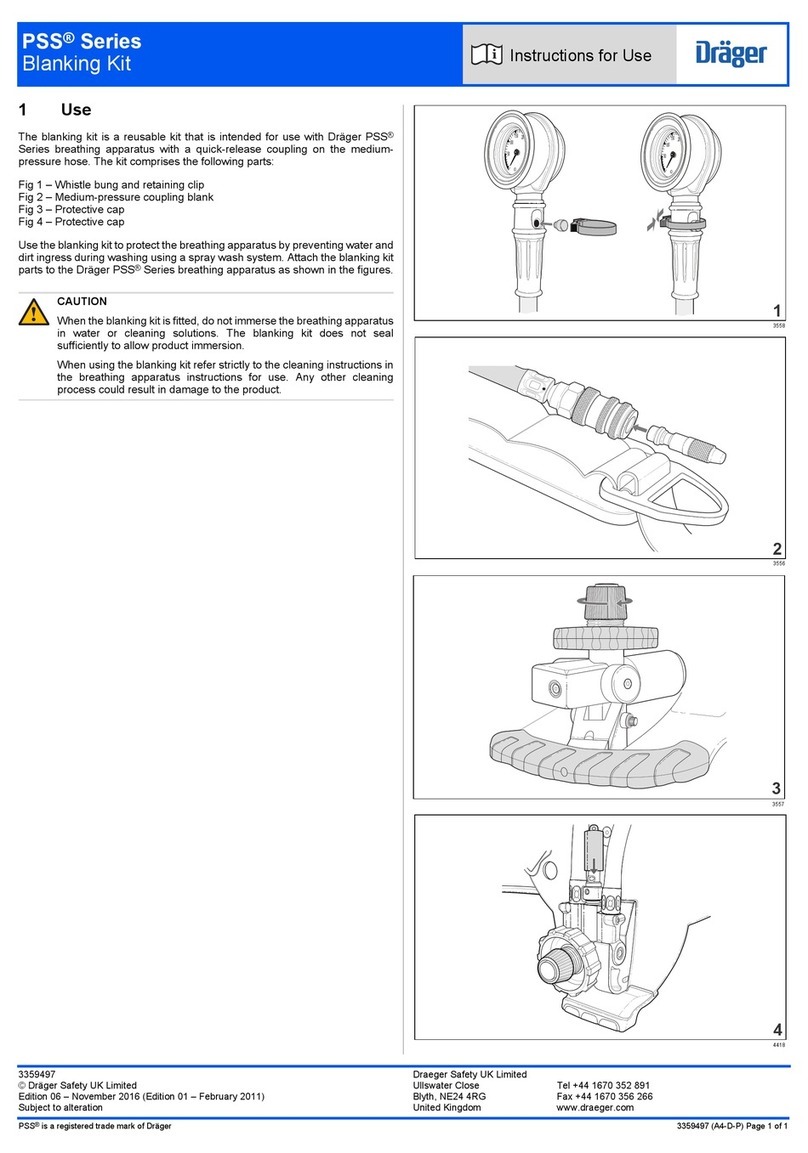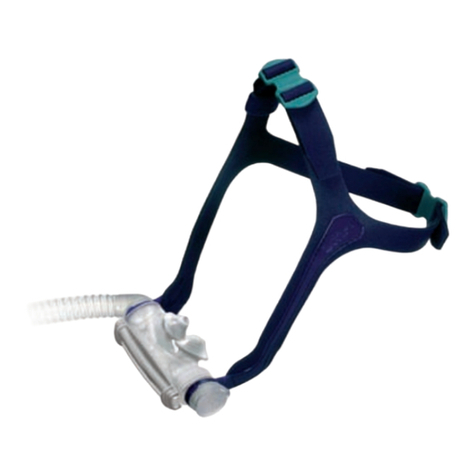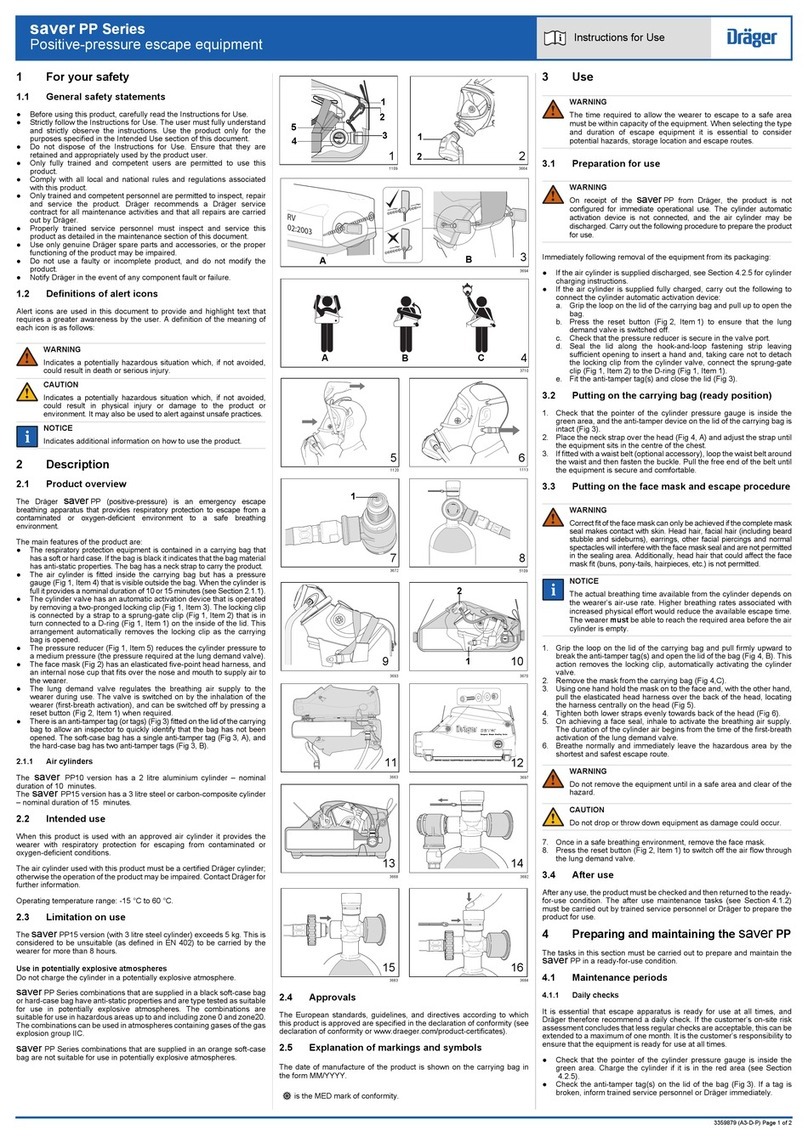1
2
3
47
56
8
9
10 11
12
English
Introduction
Thank you for purchasing a NA100 Compressor Nebulizer.
With proper care and use, your nebulizer will provide you
with many years of reliable treatments. This unit operates on
standard AC power. Treatments are delivered quickly, safely and
conveniently making this unit ideal for all ages. We encourage
you to thoroughly read this guidebook to learn about the
features of your nebulizer. Your compressor nebulizer should
be used under the supervision of a licensed physician and/or
a respiratory therapist. Together with your physician and/or
respiratory therapist, you can feel comfortable and condent
knowing that you are obtaining the most eective inhalation
treatments for your respiratory condition.
NOTE: Your nebulizer is intended for use in treatment of asthma,
COPD and other respiratory ailments in which an aerosolized
medication is required during therapy. Please consult with your
physician and/or pharmacist to determine if your prescription
medication is approved for use with this nebulizer. For type,
dose, and regime of medication follow the instructions of your
doctor or respiratory therapist.
This device fulls the provision of the EC directive 93/42/EEC
(Medical Device Directive) and the European Standard EN
13544-1:2007+A1:2009 Respiratory therapy equipment - Part 1:
Nebulizing systems and their components.
Please read this manual carefully before use and be sure to
keep this manual.
Cautions
Please use general safety precautions when operating your
nebulizer. This unit should be used only for its intended purpose
as described in this guidebook and with medications only under
the supervision and instruction of your physician. Do not use the
device in anesthetic or ventilator breathing circuits.
Product cautions
READ THE FOLLOWING BEFORE USING
• To avoid electrical shock: keep unit away from water.
• Do not handle the unit of power cord with wet hands.
• Do not immerse the unit in liquid.
• Do not use while bathing.
• Do not reach for a unit that has fallen into water immediately
unplug the unit.
• Do not use the unit if it has any damaged parts (including plug),
if it has been submersed in water or dropped. Promptly send
the unit for examination and repair.
• The unit should not be used where ammable gas, oxygen or
aerosol spray products are being used.
• Keep the air vents open. Do not place the unit on a soft surface
where the openings can be blocked.
• If the medication cup is empty, do not attempt to operate the
unit.
• If any abnormality occurs, discontinue to use until the unit has
been examined and repaired.
• The unit should not be left unattended while plugged in.
• Do not tilt or shake the unit when in operation.
• Disconnect the unit from the electrical outlet before cleaning,
lling and after each use.
• Do not use attachments unless recommended by the
manufacturer.
• Do not disassemble or attempt to repair the unit.
• Do not use the device in anesthetic or ventilator breathing
circuits.
Operating cautions
• Close adult supervision is highly recommended when the unit is
used by children or invalids.
• Keep your eyes away from the output of medication mist.
• The maximum capacity of the medication cup is 5 ml and should
not be overlled.
• Do not use this unit while operating a vehicle.
• If any discomfort or abnormality occurs, stop using the unit
immediately.
• Do not use the device if the air tube is bent.
• Pentamidine is not an approved medication for use with this
device.
Storage cautions
• Do not store the unit in direct sunlight, high temperature or
humidity.
• Keep the unit out of reach of small children.
• Always keep the unit unplugged while not in use
Cleaning cautions
• Check air lter, nebulizer, mouthpiece and any other optional
component before each use. Dirty or worn parts should be
replaced.
• Do not immerse the unit in water. It may damage the unit.
• Disconnect the unit from the electrical outlet before cleaning.
• Clean all necessary parts after each use as instructed in this
guidebook.
• Always dispose of any remaining medication in the medication
cup after each use. Use fresh medication each time you use the
device.
• Do not store the air tube with moisture or medication remaining
in the air tube. This could result in infection as a result of bacteria.
MEDICAL DISCLAIMER:
This manual and product are not meant to be a substitute for
advice provided by your doctor or other medical professionals.
Don’t use the information contained herein or this product
for diagnosing or treating a health problem or prescribing any
medication. If you have or suspect that you have a medical
problem, promptly consult your doctor.
This instrument is covered by a 1 year guarantee from the purchase
date. The guarantee is valid only on presentation of the guarantee
card completed by the dealer conrming purchase date or the
receipt. Nebulizer Components are not included. Opening or
altering the instrument invalidates the guarantee. The guarantee
does not cover damage, accidents or non-compliance with the
instruction manual. Please contact Rossmax Service or distributors.
Product specications
Power AC 230V/50Hz or AC 220V/60Hz or
AC 110V/60Hz
Power Consumption ≤ 130W
Sound Level ≤ 55 dBA (1 meter away from
NA100)
Compressor Pressure Range > 30 psi (207 kPa)
Operating Flow Range ≥ 4.0 lpm
Operating Temperature
Range
10ºC to 40ºC (50ºF to 104ºF)
Operating Humidity Range 10 ~ 90% RH
Operating Atmospheric
Pressure Range
700-1060 hPa
Storage Temperature Range -20ºC to 60ºC (-4ºF to 140ºF)
Storage Humidity Range 10 ~ 90% RH
Dimension (L x W x H) 280mmx190mmx100mm
(11.02x7.48x3.93 inches)
Weight 1750g (without accessories)
Medication Capacity 5ml(cc)
Particle Size (MMAD) ≤ 2.4μm
Dv50 (Spraytec) ≤ 4.4μm
Average Nebulization Rate Fully open Valve ≥ 0.4ml/min
(0.9% Saline Solution)
Closed Valve ≥ 0.22ml/min
(0.9% Saline Solution)
Standard Accessories Nebulizer Kit, Air Tube, Mouth-
piece, Filters, Adult and child
masks, Service manual
*Subject to technical modication without prior notice.
* Performance may vary with drugs such as suspensions or high
viscosity, See drug supplier’s data sheet for further details.
AProduct identication
1. Nebulizer Kit 2. Nozzle 3. Angled Mouthpiece
4. Air Filter 5. Child Mask 6. Adult Mask
7. Air Tube 8. Power Switch 9. Air Filter Slot
10. Air Output 11. Air Intake 12. Power Cord
The nebulization rates can be adjusted by the user in a very easy
way without exchanging parts. Higher nebulization rate/fully
open is for higher viscosity medications and higher breathing
capacity user while lower nebulization rate with closed valve
will be more appropriate for kids / infants with lower breathing
capacity.
CAssembling your nebulizer kit
Follow the cleaning instructions in this guidebook under
“Cleaning technique” prior to using your nebulizer for the rst
time or after it has been stored for an extended period of time.
REMEMBER: Always unplug the compressor and make sure the
power-switch is turned to the “OFF” position before cleaning,
assembling and before or after each use.
1. Place the compressor on a at, stable surface within reach.
2. Gently twist and pull straight up on the lid of the nebulizer to
separate into two parts (medication cup and cover).
3. Make sure that the nozzle is properly installed on the upper
cover. The stem inside the medication cup inserts into the
tube of the nozzle.
4. Add the prescribed amount of medication to the medication
cup.
5. Reassemble the nebulizer by carefully twisting the medication
cup and cover together. Make sure that the two parts t
securely.
WARNING: The symbol on this product means that it’s an
electronic product and following the European directive
2012/19/EU the electronic products have to be disposed
on your local recycling centre for safe treatment.
BValve Adjustable Technology
The proprietary adjustable valve is able to deliver medications of
dierent viscosity level according to every user’s conditions and
needs at ease. Our VA technology allows users to adjust dierent
levels of nebulization rate ranging from 0.22 – 0.4 ml/min at
consistent particle size.
DOperating your nebulizer
The nebulizer is operable at up to a 45° angle. If the angle is
greater than 45°, no aerosol will be generated.
1. Attach one end of the air tube connector to the air output.
2. Carefully attach the opposite end of the air tubing connector
to the stem at the base of the nebulizer kit.
3. Attach the angled mouthpiece or mask to the top of the
nebulizer.
4. The capacity of the medication cup is 2~5 ml.
NOTE: A 30-minute interval is recommended after each use. The
compressor will automatically shut o if it becomes overheated.
If / when this happens, immediately:
1. Press the power-switch to the “OFF” position.
2. Unplug the power cord from the outlet.
3. Allow the motor to cool for 30 minutes.
Before restarting the unit, make sure that the air vents are not
obstructed.
